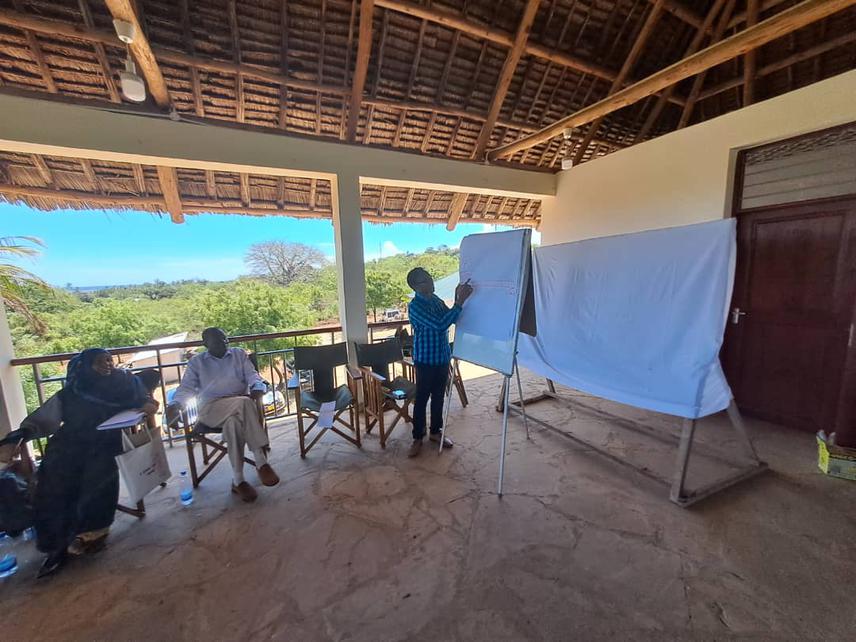Makemie Jumanne Mabula
Around Lake Victoria, there are hopes that cage aquaculture can reduce fishing pressure from wild stock, enhance fish protein supply and create employment. Recently, interest by local communities towards cage culture around Lake Victoria has significantly increased. However, if not well planned, cage aquaculture can impact the already threatened Lake Victoria’s ecosystem and is likely to spur into social conflicts. Therefore, the key to successfully cage aquaculture relies on proper site selection. The national, guidelines require that suitable sites need to be optimized, based on both ecological, environmental and social criteria. Such holistic consideration of factors aspires not only to maximize the economic viability but also to enhance the environmental sustainability and social acceptability of the project.

Stakeholder engagement. © Ivon Maha, Ilemela Municipal Council Fisheries Officer.
Despite that cage aquaculture in Lake Victoria is still under the infant stage, future growth potential is very high. Yet information to guide proper sitting of cages is still lacking. More specifically, no attempt has been made to reveal the suitable areas where fish cages can be operated sustainably. This is a particular case in the Tanzanian side of Lake Victoria. The areas considered suitable for cage aquaculture lack clear cut demarcation based on spatial perspectives.
Identification of suitable sites for cage aquaculture is a challenging task. Most of the factors incorporated during site selection are complex and vary in space and time. The currently used methods are ineffective in combining complex and interacting variables in space. The existing site selection approach in the Tanzanian side of Lake Victoria involves extensive field surveys coupled with limited GPS-aided sampling. The major limitation of this approach is high costs and ineffectiveness when dealing with multiple factors. Due to sampling limitations, the existing approach relies on a few sets of selected biophysical parameters—thus producing unreliable information for informed management, decision making and planning. A continued lack of such information would lead to poor cage aquaculture site selection, which in turn jeopardise the already threatened fish species and habitats in the area. Geographic Information Systems (GIS) can handle complex spatial problems such as aquaculture site selection. A framework proposed in this study utilises the power of GIS to integrate multiple factors from ecology, the physical environment and socioeconomics into a single site suitability model. The expected outputs from this study are maps that portray the location and extent of areas that can support cage aquaculture amidst the existing ecological, physical and environmental constraints.
Header: Visit of fish cage farms with the Regional Commissioner. © Abdul Mohamed -Ayo TV Mwanza.